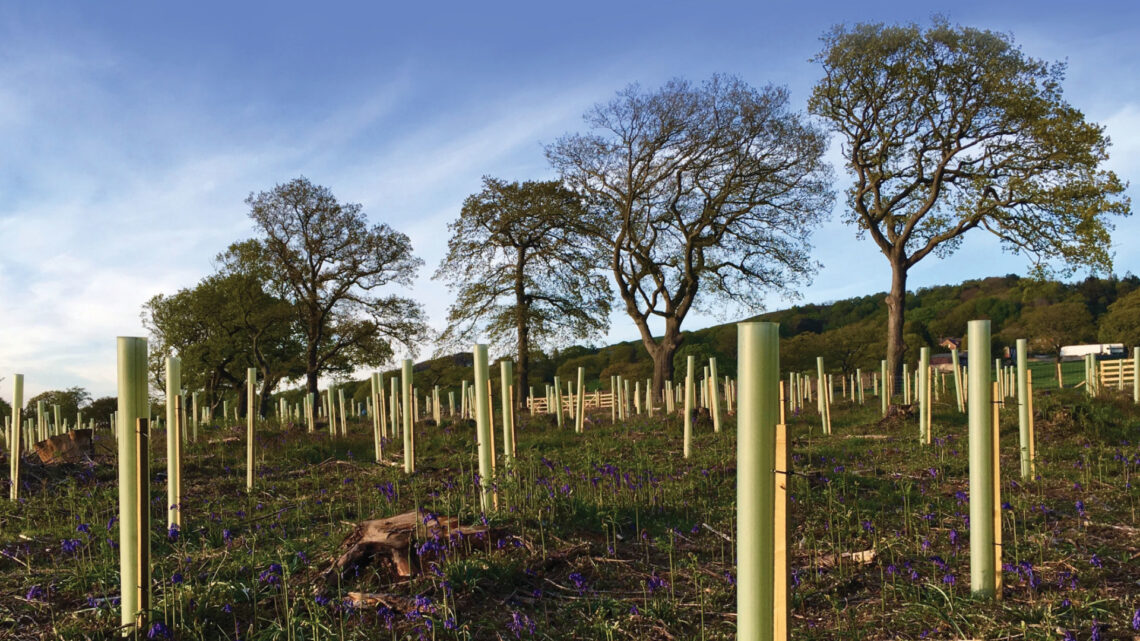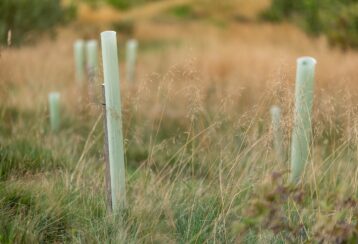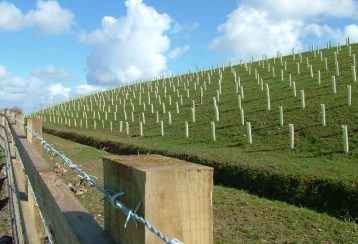Tree Planting Advice from Tubex
Businesses, local authorities, and other organisations are planting more and more trees as part of their sustainability strategies. Unfortunately, however, they don’t always get it right, usually by ignoring key tree planting advice.
Tree planting is, undeniably, an effective way to sequester CO2, but the approach of some organisations to it leaves a lot to be desired, with poor planning and often a purely performative ‘greenwashing’ attitude to planting resulting in high failure rates.
Both time and valuable resources are wasted in this way, even planting schemes with the best of intentions can fail due to a lack of knowledge and incorrect advice.
For us at Tubex, our goal is to help plant as many trees as possible and to make sure that what does get planted survives and thrives.
Read our latest blog for some key tree-planting advice, so that the trees you plant will still be around for decades to come:
Location, Location, Location
Location is an essential consideration to make when planting.
The local climate, soil conditions, moisture levels and air pollution are just some of the factors to consider when choosing both a planting scheme’s location and the types of trees to plant.
If you are planting in urban environments or beside busy roads, species resistant to air pollution such as field maple are recommended.
If you are planting in high moisture environments such as in wetlands or beside waterways, trees adapted to these conditions such as alder and willow are the way to go.
Look at what species are naturally occurring in the area and use that to guide you – there’s usually a reason why those particular trees are there!
For a more detailed guide on how to select the right trees, read The Conservation Volunteer’s excellent guide on species selection here: https://www.conservationhandbooks.com/select-trees-new-native-woodland/
The layout of your planting scheme also plays an important part in maximising survival rates.
Try to avoid planting trees in an overly uniform, regimented fashion, making sure there is variety in the planting sections with open spaces and edge habitats. This not only promotes growth by giving trees the freedom to establish their root bases – but also provides significant benefits to wildlife by creating structural and habitat diversity.
Access is another important consideration. Maintenance is vital to the success of any planting scheme, especially in the first few years – so make sure that you can access the site easily to track pests, repair fencing, replace any lost saplings or collect and recycle your tree shelters at their end-of-life.
In Season – Planting at the Right Time
The ‘tree planting season’ is well understood amongst foresters and woodland conservation groups and runs from around November to March, weather depending.
However, with stories coming to light of organisations planting trees at the height of summer…and thus experiencing horrendous sapling failure rates – it is clear that more education is needed.
Trees are planted in the winter for a number of reasons.
The process of transporting and planting puts stress on the saplings, so doing this whilst the saplings are dormant for the winter helps mitigate this stress.
The winter months usually experience higher levels of rainfall, thus increasing soil moisture and helping saplings to establish their roots, ready for spring and summer.
Make sure to plant when weather conditions are right, avoiding overly wet or cold weather – your saplings won’t do well in the frozen or waterlogged ground!
Use the Right Protection
It’s also vital to ensure that the right tree protection measures are in place to maximise your saplings’ chances of survival.
An old oak tree looks imposing and resilient, but it took many decades to get to that stage from its life as a vulnerable sapling.
External risks to saplings are many. Extremes in weather conditions, such as temperature fluctuations and drought conditions, can kill off saplings in the early years. Hungry voles, rabbits and deer are also a significant risk, eating saplings before they have a chance to establish themselves.
Making sure your planting scheme has protection measures in place, such as deer fencing and tree shelters, is key to protecting against these risks.

Tree shelters in particular increase survival rates by protecting saplings from animal browsing, but also through providing a ‘microclimate’ in each tube by increasing air moisture and insulating young trees against extremes in weather conditions.
Our tree shelters have been proven to provide survival rates of over 90%, and we pride ourselves to offer a wide range of tree protection solutions for different scenarios, such as our Recyclable tree shelters and our Nature biodegradable shelters for where the collection of tree shelters isn’t possible – you can browse our product range here.
Working Together
We strive for transparency in tree planting, and sometimes this means pointing out when things go wrong.
This is important, however, as the ultimate goal for us is the planting of as many trees as possible that will survive to maturity.
We hope that, through education and effective advice, tree planting best practice becomes the norm throughout the UK.
If you run or know of a volunteer-led planting scheme that needs support or tree-planting advice, check out our latest charitable initiative Grow Together, which donates tree shelters to small-scale projects


